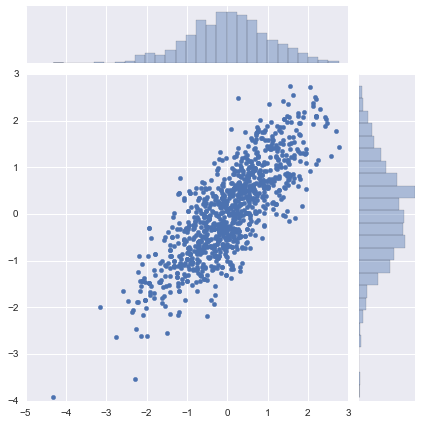Sampyl Package
Over the past few weeks I’ve really begun to appreciate the versatility of Python for data analysis as I have discovered a large number of powerful packages.
I’m going to look at a couple in the next two posts which I think are worth sharing.
Sampyl is a Python library, written by Mat Leonard, which implementing Markov Chain Monte Carlo (MCMC) samplers in Python. When used to its full potential it harnesses Bayesian parameter estimation and provides a collection of distribution log-likelihoods for use in constructing models. All of this without the need to learn unPuthonesque syntax/semantics.
Sampyl uses Autograd (see next post) when using Samplers such as NUTS which require gradients.
I love the jointplot using seaborn at the end of the example below (sampling from a 2D correlated normal distribution) which simultaneously shows individual distributions as well as correlation.
%matplotlib inline
import sampyl as smp
from sampyl import np
import seaborn
icov = np.linalg.inv(np.array([[1., .8], [.8, 1.]]))
def logp(x, y):
d = np.array([x, y])
return -.5 * np.dot(np.dot(d, icov), d)
start = {'x': 1., 'y': 1.}
nuts = smp.NUTS(logp, start)
chain = nuts.sample(1000)
seaborn.jointplot(chain.x, chain.y, stat_func=None)
Progress: [##############################] 1000 of 1000 samples
